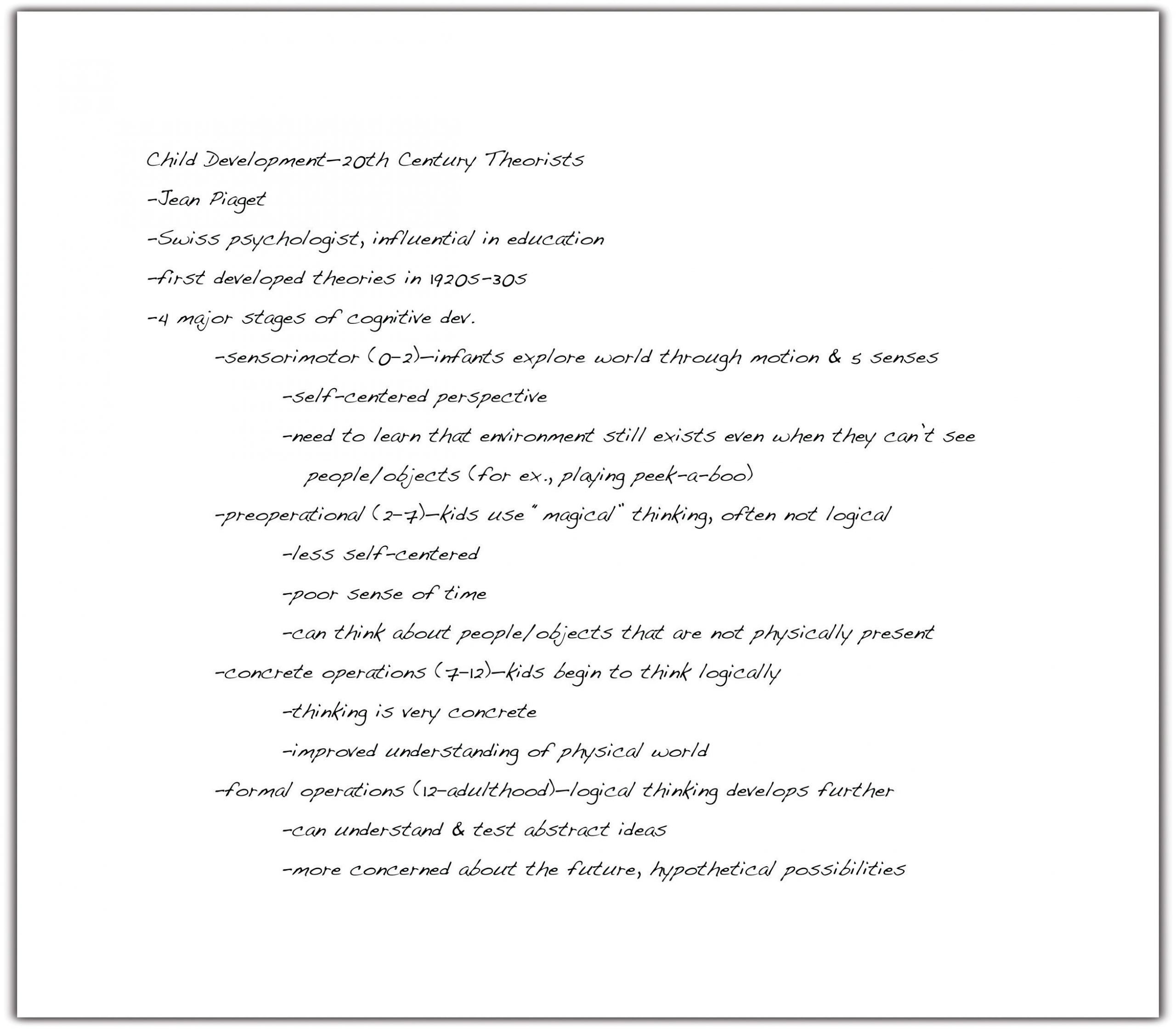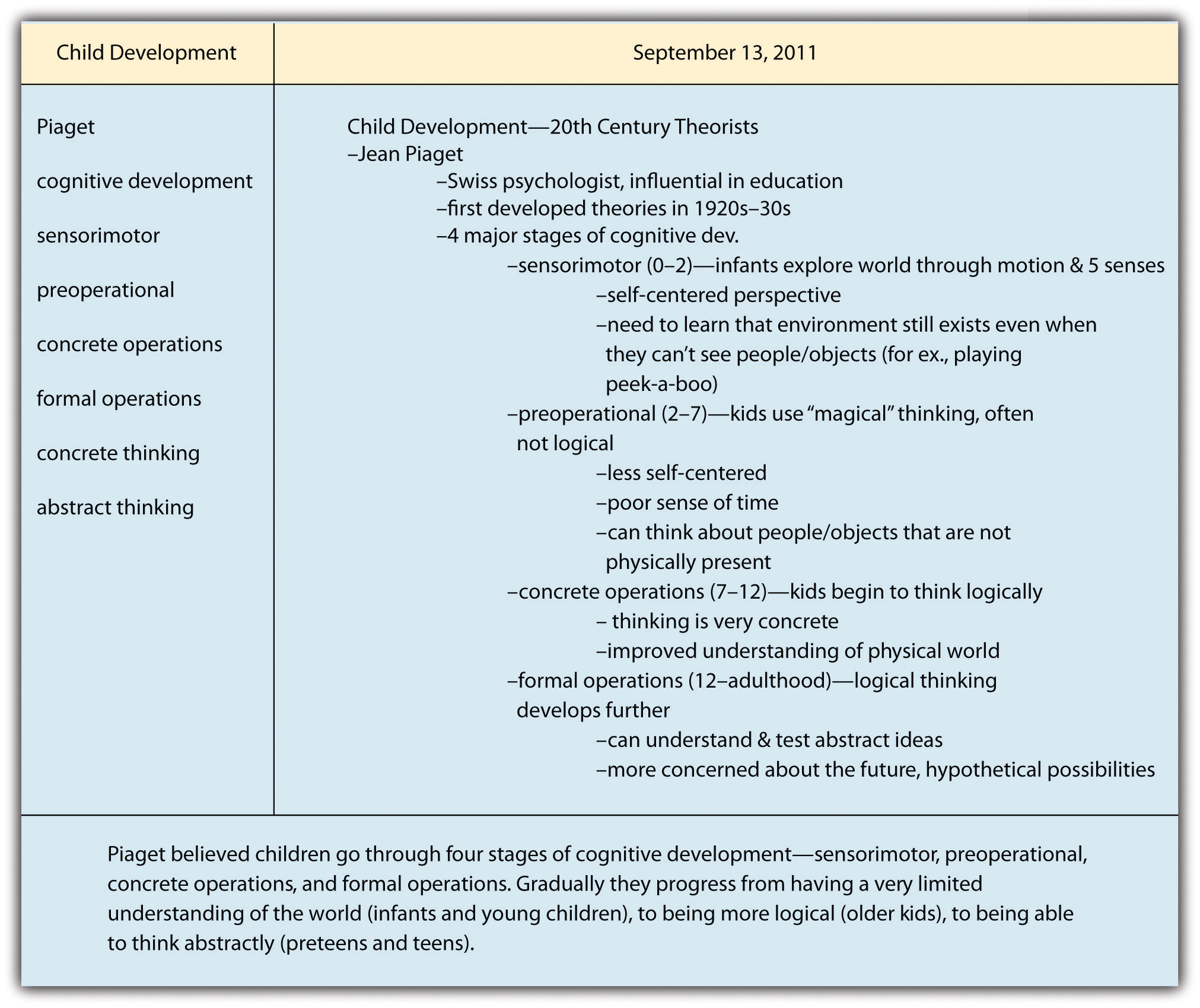1.2 Study Skills
Preview
This section of Ch. 1 will cover the following topics:
- learning styles
- time management
- note taking
Every student is different: different interests, different abilities, different styles. Adapt these strategies to create a study system that works for you.
Learning Styles
Educational researchers and psychologists examine how people take in and integrate new information, how they learn differently, and what conditions make people most productive. Knowing how you learn best can help you succeed in college.
Exercise 1
In your notebook, briefly answer these questions. (Remember to put “Ch. 1.2” and the date in the top right corner of the page and “Exercise 1” on the top line.)
- What times of day are you most productive? If your energy peaks early, block out morning time for schoolwork. If you are a night owl, set aside a few evenings a week.
- How much clutter can you handle? Some people work fine at a messy desk and know exactly where to find everything, but most people benefit from maintaining a neat, organized space.
- How well do you juggle distractions? Some people work better listening to music or the hum of conversation; others need total silence. If you can study at home without being tempted to check your phone or get a snack, that’s great. If you need a less distracting environment to stay focused, find one.
- Do you work better alone or in a group? A study group can be invaluable. But if group sessions turn into social occasions, study on your own.
- How do you manage stress? Schedule regular time for activities that reduce stress, such as exercise, time with friends, or playing with a pet.
To identify your learning style, think about how you would assemble a piece of furniture. Which of these options sounds most like you?
- You carefully look over the diagrams in an assembly manual first so you can picture each step in the process.
- You silently read the directions through, step by step, and then look at the diagrams afterward.
- You read the directions aloud under your breath. Having someone explain the steps to you would also help.
- You start putting the pieces together and figure out the process through trial and error, consulting the directions as you work.
What does your choice mean?
- If you chose (1), you are probably a visual learner. You understand ideas best when they are presented in a diagram or with clear headings and illustrations.
- If you chose (2), you may be a verbal learner. You understand ideas best through reading and writing about them and taking notes.
- If you chose (3), you’re an auditory learner. You learn well from spoken lectures or recorded information.
- If you chose (4), you may be a kinesthetic learner. You learn by doing hands-on activities. In long lectures, fidgeting may actually help you focus.
Many people combine styles. However, if you have one primary learning style, work with it to get the most out of your classes.
This table provides tips for maximizing your learning style:
| Learning Style | Strategies |
|---|---|
| Visual | |
| Verbal |
|
| Auditory |
|
| Kinesthetic |
|
Time Management
In college you have the freedom to structure your time as you please. But with that freedom comes increased responsibility. College instructors expect you to take full responsibility for managing yourself and getting work done on time.
Instructors will tell you that for every hour spent in class, you should spend another two hours outside of class reading, writing, and studying. So a four-credit writing class should actually take about twelve hours per week.
That may sound like a lot, especially when taking multiple classes. But if you plan carefully, it is manageable. Budget time, just like an employer schedules shifts at work, and make studying a priority.
Exercise 2
In your notebook, map out a schedule for the next two weeks.
- Draw a table with seven columns (one for each day) and two rows (one for each week). Turn the notebook sideways if you need more room.
- Label the days and divide each day into chunks of time.
- Insert your classes, then add two hours of study time for each hour of each class.
- Add other non-negotiable responsibilities, such as a job or child care.
Did everything fit? If so, great! If not, what needs to change?
Setting up a schedule is easy. Sticking with it is harder. Remember that your calendar is a time-management tool. If you leave a tool sitting unused (if you set up your schedule and then forget it), it will not help you.
Dos & Don’ts of Time Management
| Do | Don’t |
| Do review your schedule regularly and update/adjust it as needed. | Do not plan to write a paper on Friday night when all your friends are out socializing. |
| Do be realistic when you schedule study time. | Do not waste study time on e-mail and social networking. |
| Do be honest with yourself about where your time goes. | Do not procrastinate. If you find you are putting off something, have a talk with yourself, and then do the work. |
| Do accept that occasionally you may get a little off track. No one is perfect. | Do not try to squeeze a three-hour study session into an already-packed schedule. If you have a free half hour between classes, preview a chapter. |
| Do recognize when you feel overextended. Sometimes you will have an especially demanding week. But if you feel exhausted a lot, scale back on your commitments. | Do not rely on caffeine or energy drinks to make up for lack of sleep. These stimulants temporarily perk you up, but your brain functions best when you are rested. |
Note-Taking Methods
The physical act of converting a lecture or reading to notes helps you understand and retain the information. Taking good notes is an essential study skill, but many students enter college without having received much guidance about how to take notes. To be effective, a note-taking system must allow you to record and organize information quickly.
General Guidelines
- Start class prepared, with paper, pens, highlighters, textbooks, and important handouts. Have a positive attitude and a readiness to learn.
- Before class begins, quickly review notes or assigned readings from the previous class. This will help you focus and pick out important points.
- During class, concentrate and ask questions. As you take notes, capture important ideas as concisely as you can; don’t try to write everything a teacher says. Use words or phrases instead of full sentences.
- Leave space in your notes to add more details later.
- Use a note-taking system rather than scribbling randomly. There are many options; two are explained below.
System #1: Modified Outline
An outline uses indents to identify main ideas and details. The main topic is all the way to the left, subtopics are indented, and supporting details are indented further. This is not a detailed, formal outline–just a summary. For example, it uses abbreviations for repeated or common words.
System #2: Cornell Notes
The Cornell system makes it easy to organize information clearly, note key terms, and summarize content. Begin by setting up your paper:
- Put the course name and date at the top of the page
- Create a narrow column (about two inches) at the left side of the page
- Leave a wide column (five to six inches) on the right side of the page
- Mark off a space of a few lines at the bottom of the page
During the lecture, record notes in the wide column. As soon as possible after the lecture, review your notes and jot down key terms in the left-hand column, then use the space at the bottom to summarize the page briefly.
It can take trial and error to become a good note taker: someone who gets all the important details down easily. But the more you practice, the better you will get.
Takeaways
- Understanding learning styles can help you identify strategies that work best for you.
- If your schedule isn’t working, adjust it rather than abandoning it.
- A good note-taking system separates major points and supporting details, and allows you to record and organize information quickly.
combine with other information
re-examine for clarity and quality
correct errors
a list of words and their meanings
shorten
delay or postpone
briefly



